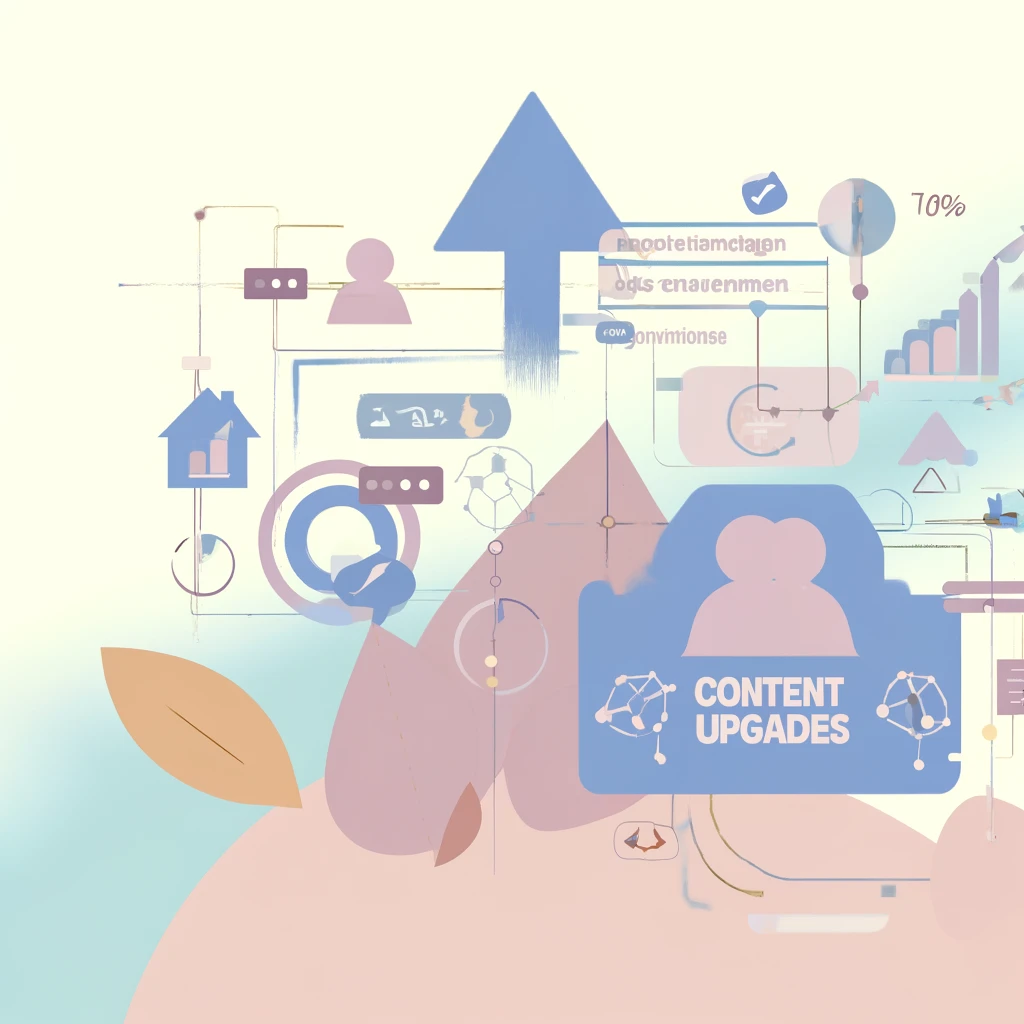Table of Contents
content upgrades for drug rehab
Introduction
Marketing a drug rehab center involves unique challenges. The audience is often seeking urgent help and assurance during stressful times. Building trust is critical in this industry. Patients and their families need to feel confident that they are making the right choice. One effective way to build this trust and drive conversions is through the strategic use of content upgrades and lead magnets.
Challenges in Drug Rehab Marketing
- High Competition:
- The drug rehab industry is highly competitive. Many centers offer similar services, making it hard to stand out. Differentiating your center from others is crucial to attract and retain clients.
- Skepticism and Mistrust:
- Potential clients and their families may be skeptical of marketing claims due to negative past experiences or stories about ineffective treatments. Overcoming this skepticism is essential for building trust and credibility.
- Urgency:
- People seeking drug rehab services often need immediate assistance. They may not have the time to conduct extensive research, making it vital for your content to quickly establish credibility and trust.
Importance of Content Upgrades and Lead Magnets for Increasing Conversions
- Enhancing User Experience:
- Content Upgrades: These are additional resources offered within your content that provide extra value. Examples include downloadable e-books, checklists, or templates. Content upgrades enhance user experience by offering more in-depth information or useful tools related to the content they are already engaging with.
- Lead Magnets: These are valuable resources given in exchange for contact information, such as email addresses. Examples include webinars, free consultations, or exclusive guides. Lead magnets help capture valuable leads and nurture them through your marketing funnel.
- Building Trust and Credibility:
- Providing high-quality, relevant content upgrades and lead magnets demonstrates your expertise and commitment to helping potential clients. This builds trust and positions your rehab center as a reliable resource.
- Driving Engagement and Conversions:
- Effective content upgrades and lead magnets encourage users to take action, whether it’s downloading a resource, signing up for a webinar, or booking a consultation. This engagement is crucial for converting visitors into leads and eventually into clients.
- Optimizing the Marketing Funnel:
- Content upgrades and lead magnets help optimize your marketing funnel by guiding potential clients through different stages of their decision-making process. From awareness to consideration to decision, these tools ensure that your audience remains engaged and informed at each step.
Start leveraging these tools to drive conversions and build trust today.
Contact us today!Understanding Content Upgrades and Lead Magnets
Content upgrades and lead magnets are essential tools in the marketing strategy for drug rehab centers. They help attract, engage, and convert potential clients by offering valuable resources that address their needs and concerns. This chapter will define these tools and explain their benefits and how they fit into the overall marketing strategy for drug rehab centers.
Definition and Benefits of Content Upgrades and Lead Magnets
- Content Upgrades:
- Definition: Content upgrades are additional resources or bonus materials provided within a piece of content. They are usually more in-depth or offer extra value compared to the main content. Examples include e-books, checklists, templates, and detailed guides.
- Benefits:
- Enhanced User Experience: Content upgrades offer more value to the reader, making their experience richer and more informative.
- Increased Engagement: By providing additional resources, you encourage visitors to spend more time on your site and engage more deeply with your content.
- Lead Generation: Content upgrades often require users to provide their contact information in exchange for access, helping you capture valuable leads.
- Lead Magnets:
- Definition: Lead magnets are valuable resources or offers given to visitors in exchange for their contact information, such as email addresses. Examples include webinars, free consultations, exclusive guides, and whitepapers.
- Benefits:
- Lead Capture: Lead magnets effectively capture contact information from potential clients, allowing you to build a database of leads.
- Trust Building: Offering valuable resources for free helps build trust and positions your rehab center as a knowledgeable and helpful resource.
- Conversion Boost: By nurturing leads through email marketing and other follow-up strategies, you can convert them into clients more effectively.
How They Fit into the Overall Marketing Strategy for Drug Rehab Centers
- Attracting Potential Clients:
- Content upgrades and lead magnets attract potential clients by offering valuable information and resources that address their specific needs and concerns. This helps draw in a targeted audience that is more likely to be interested in your services.
- Engaging and Educating:
- These tools provide deeper insights and more detailed information than regular content, helping to educate potential clients about the rehab process, treatment options, and the benefits of your center. This engagement helps build trust and credibility.
- Capturing Leads:
- By offering content upgrades and lead magnets in exchange for contact information, you can capture leads and build a database of potential clients. This is crucial for follow-up marketing efforts and nurturing leads through the decision-making process.
- Nurturing and Converting:
- Once you have captured leads, you can use email marketing and other strategies to nurture these leads. Providing them with more valuable content and keeping them engaged helps move them closer to making a decision and choosing your rehab center.
- Optimizing the Marketing Funnel:
- Content upgrades and lead magnets help optimize your marketing funnel by guiding potential clients through the different stages of their decision-making process. From attracting visitors to engaging them with valuable content, capturing their contact information, and nurturing them into clients, these tools ensure a smooth and effective marketing journey.

Start optimizing your content marketing strategy today.
Let’s make a difference!Types of Content Upgrades for Drug Rehab Centers
Content upgrades are additional resources or bonus materials provided within your content to enhance value and engagement. They play a crucial role in attracting and converting potential clients. Here, we explore examples of effective content upgrades and how to create valuable ones tailored to your audience.
Examples of Effective Content Upgrades
- E-Books:
- Description: E-books offer in-depth information on specific topics related to drug rehab. They can cover subjects like “Understanding Different Treatment Options” or “Steps to Support a Loved One in Recovery”.
- Benefits: E-books provide comprehensive knowledge, establish your authority, and can be easily downloaded and shared.
- Checklists:
- Description: Checklists are simple, actionable lists that help users remember important steps or considerations. Examples include “Checklist for Choosing a Rehab Center” or “Checklist for Preparing for Rehab”.
- Benefits: Checklists are practical tools that offer immediate value and can be easily printed or saved for future reference.
- Templates:
- Description: Templates can be used to create personalized plans or documents. For instance, a “Recovery Plan Template” or “Daily Schedule Template for Rehab”.
- Benefits: Templates save time and effort for your audience, making complex tasks easier and more manageable.
- Guides and How-Tos:
- Description: These are detailed documents that provide step-by-step instructions on specific topics, such as “How to Support Someone in Rehab” or “Guide to Understanding Addiction”.
- Benefits: Guides and how-tos offer detailed, actionable advice that can help users navigate complex issues with confidence.
- Infographics:
- Description: Infographics present information visually, making complex data easy to understand. Examples include “Infographic on the Stages of Addiction” or “Infographic on Rehab Success Rates”.
- Benefits: Infographics are engaging and easy to share, making them effective for spreading information quickly.
How to Create Valuable Content Upgrades Tailored to Your Audience
- Understand Your Audience:
- Identify Needs: Conduct surveys, interviews, and analyze data to understand the specific needs and concerns of your audience.
- Tailor Content: Create upgrades that directly address these needs and provide solutions to their problems.
- Focus on Quality:
- Detailed and Accurate: Ensure your content upgrades are well-researched, detailed, and accurate. This builds trust and demonstrates your expertise.
- Professional Design: Invest in professional design to make your upgrades visually appealing and easy to read.
- Make Them Accessible:
- Easy Download: Ensure that your content upgrades are easy to download and access. Use clear calls-to-action and simple forms to collect contact information.
- Multi-Format Options: Offer content upgrades in multiple formats (PDFs, Word documents, etc.) to cater to different preferences.
- Promote Strategically:
- Relevant Placement: Place content upgrades in relevant blog posts, articles, and web pages where they can add the most value.
- Highlight Benefits: Clearly explain the benefits of the content upgrade and how it will help the audience solve their problems or meet their needs.
- Regular Updates:
- Stay Current: Regularly update your content upgrades to ensure they remain relevant and valuable. This shows that your information is up-to-date and reliable.

Start creating valuable content upgrades today.
Start today!Creating Effective Lead Magnets
Lead magnets are crucial tools in your marketing strategy, especially for drug rehab centers. They help capture contact information from potential clients, allowing you to nurture these leads through targeted marketing efforts. In this chapter, we will explore different types of lead magnets and best practices for designing and promoting them.
Different Types of Lead Magnets
- Webinars:
- Description: Webinars are live or recorded sessions where experts discuss important topics related to drug rehab. They can cover subjects like “Understanding Different Treatment Options” or “Supporting a Loved One in Recovery”.
- Benefits: Webinars offer in-depth knowledge and direct interaction with experts. They build trust and provide immediate value to attendees.
- Free Consultations:
- Description: Offering a free consultation allows potential clients to speak directly with a counselor or specialist. This can help them understand their options and the benefits of your rehab center.
- Benefits: Free consultations build a personal connection and provide an opportunity to address specific concerns, increasing the likelihood of conversion.
- Downloadable Resources:
- E-Books: Comprehensive guides that cover various aspects of addiction and recovery.
- Checklists: Practical tools like “Checklist for Choosing a Rehab Center” or “Preparation Checklist for Rehab”.
- Templates: Resources such as “Daily Schedule Template for Rehab” or “Personal Recovery Plan Template”.
- Benefits: Downloadable resources offer immediate, tangible value and can be easily shared, enhancing your reach and credibility.
- Exclusive Guides:
- Description: These are detailed documents that provide specialized knowledge on specific topics, such as “Step-by-Step Guide to Recovery” or “Understanding the Different Phases of Rehab”.
- Benefits: Exclusive guides position your rehab center as an authority and provide significant value to potential clients.
- Free Trials or Samples:
- Description: Offering a free trial of a support service or a sample session can help potential clients experience your services firsthand.
- Benefits: Free trials and samples lower the barrier to entry and provide immediate value, encouraging potential clients to take the next step.
Best Practices for Designing and Promoting Lead Magnets
- Identify Audience Needs:
- Research: Understand what your audience needs and what problems they are trying to solve. Use surveys, interviews, and data analysis to gather insights.
- Tailored Content: Create lead magnets that directly address these needs and provide practical solutions.
- Create Compelling Titles:
- Clear and Specific: Use clear, specific titles that convey the value of the lead magnet. Avoid vague or generic titles.
- Benefit-Oriented: Highlight the benefits of the lead magnet in the title to attract attention.
- Design for Ease of Use:
- Professional Design: Ensure that your lead magnets are professionally designed and easy to read. Use clean layouts, readable fonts, and engaging visuals.
- Accessible Formats: Offer lead magnets in accessible formats (PDFs, videos, etc.) that are easy to download and view.
- Promote Strategically:
- Website Placement: Place lead magnets prominently on your website, such as in blog posts, landing pages, and pop-ups.
- Social Media: Use social media platforms to promote your lead magnets. Share snippets or teasers to generate interest.
- Email Marketing: Promote lead magnets through email campaigns to your existing subscribers.
- Follow Up and Nurture:
- Email Sequences: Set up automated email sequences to nurture leads after they download a lead magnet. Provide additional value and guide them towards conversion.
- Personalized Communication: Use personalized communication to build relationships and address individual concerns.

Start creating effective lead magnets tailored to your audience today.
Let’s work together!Implementing Content Upgrades in Your Marketing Funnel
Content upgrades are powerful tools that can significantly enhance the effectiveness of your marketing funnel. By providing additional value to your audience, you can increase engagement, capture more leads, and drive higher conversions. This chapter offers a step-by-step guide to integrating content upgrades into your existing content and provides tips for optimizing their placement and visibility.
Step-by-Step Guide to Integrating Content Upgrades
- Identify Key Content Areas:
- Analyze Performance: Start by analyzing your existing content to identify high-performing blog posts, articles, and pages. These are ideal candidates for content upgrades.
- Audience Needs: Consider the needs and interests of your audience. Choose content that addresses their key concerns and provides valuable information.
- Create Relevant Content Upgrades:
- Tailored Resources: Develop content upgrades that complement the main content. For example, if you have a blog post on “Steps to Prepare for Rehab”, create a detailed checklist or e-book as the upgrade.
- High-Quality Material: Ensure the content upgrade is high-quality, well-researched, and provides real value. This helps build trust and encourages users to engage.
- Design and Format:
- Professional Design: Use professional design tools to create visually appealing and easy-to-read content upgrades. Include clear headings, bullet points, and images to enhance readability.
- Multiple Formats: Offer the content upgrade in multiple formats (PDFs, printable versions, etc.) to cater to different user preferences.
- Integrate Content Upgrades into Existing Content:
- In-Content Links: Embed links within the main content that direct users to the content upgrade. Use clear and compelling calls-to-action (CTAs) like “Download Now” or “Get Your Free Guide”.
- End-of-Post Offers: Place content upgrades at the end of blog posts and articles. This placement ensures that users who found the content valuable will be more likely to opt-in for the upgrade.
- Create Landing Pages:
- Dedicated Pages: Develop dedicated landing pages for your content upgrades. These pages should include a brief description of the upgrade, its benefits, and a simple form to capture contact information.
- SEO Optimization: Optimize the landing pages with relevant keywords to attract organic traffic.
- Promote Content Upgrades:
- Social Media: Share your content upgrades on social media platforms to reach a broader audience. Use engaging visuals and teasers to drive interest.
- Email Marketing: Promote content upgrades through email campaigns to your existing subscribers. Highlight the value and encourage them to share it with others.
Tips for Optimizing the Placement and Visibility of Content Upgrades
- Strategic Placement:
- Above the Fold: Place content upgrades “above the fold” on your webpage, meaning users can see it without scrolling down. This placement increases visibility and click-through rates.
- Within Content: Embed content upgrades within the main content where they are most relevant. For example, if you mention a specific step in a process, link to a detailed guide as the upgrade.
- Clear and Compelling CTAs:
- Action-Oriented Language: Use action-oriented language in your CTAs. Phrases like “Download Your Free Guide” or “Get Instant Access” are effective.
- Contrast and Design: Ensure that CTAs stand out visually. Use contrasting colors and bold fonts to draw attention.
- A/B Testing:
- Test Variations: Conduct A/B testing to determine which placements, designs, and CTAs perform best. Continuously refine based on data.
- Monitor Performance: Track key metrics like conversion rates, click-through rates, and bounce rates to measure the effectiveness of your content upgrades.
- Mobile Optimization:
- Responsive Design: Ensure that your content upgrades and CTAs are mobile-friendly. Many users access content via mobile devices, so a seamless experience is crucial.
- Simple Forms: Use simple, easy-to-complete forms for mobile users. Avoid lengthy forms that may deter sign-ups.

Start optimizing your content for better engagement today.
Contact us today!Driving Conversions with Lead Magnets
Lead magnets are essential tools for capturing and nurturing leads in drug rehab marketing. By offering valuable resources in exchange for contact information, you can build a list of potential clients and guide them through your marketing funnel. This chapter explores strategies for using lead magnets effectively and presents case studies of successful campaigns in the drug rehab industry.
Strategies for Using Lead Magnets to Capture and Nurture Leads
- Identify Your Audience’s Needs:
- Research: Understand the specific needs and concerns of your audience. Use surveys, interviews, and data analysis to gather insights.
- Tailored Content: Create lead magnets that address these needs directly, providing practical solutions and valuable information.
- Create High-Value Lead Magnets:
- Content Quality: Ensure your lead magnets are well-researched, informative, and provide real value. Examples include e-books, checklists, templates, webinars, and free consultations.
- Professional Design: Use professional design to make your lead magnets visually appealing and easy to read. This helps in building trust and credibility.
- Optimize Placement and Visibility:
- Strategic Placement: Place lead magnets prominently on your website, such as on landing pages, within blog posts, and in pop-ups. Ensure they are easy to find and access.
- Compelling CTAs: Use clear and compelling calls-to-action (CTAs) to encourage visitors to opt-in for your lead magnets. Highlight the benefits and value they will receive.
- Use Email Marketing to Nurture Leads:
- Follow-Up Sequences: Set up automated email sequences to nurture leads after they opt-in. Provide additional value through informative emails, tips, and resources.
- Personalized Communication: Use personalized communication to build relationships with your leads. Address their specific concerns and provide tailored solutions.
- Analyze and Refine Your Strategy:
- Track Performance: Monitor key metrics such as conversion rates, click-through rates, and engagement rates to measure the effectiveness of your lead magnets.
- A/B Testing: Conduct A/B testing to determine which lead magnets, placements, and CTAs perform best. Continuously refine your strategy based on data insights.
Case Studies of Successful Lead Magnet Campaigns in the Drug Rehab Industry
- Case Study 1: Free Consultation Offer:
- Campaign Overview: A drug rehab center offered a free consultation with a counselor as a lead magnet. The offer was promoted through the website, social media, and email marketing.
- Results: The campaign resulted in a 40% increase in lead capture. Many leads scheduled consultations, leading to a 25% conversion rate from consultations to admissions.
- Case Study 2: E-Book on Recovery Strategies:
- Campaign Overview: Another center created an in-depth e-book titled “Top Strategies for Successful Recovery”. The e-book was offered on the website and promoted through blog posts and social media.
- Results: The e-book attracted over 1,000 downloads within the first month. The email follow-up sequence had a high open rate, and 15% of the leads engaged with further consultations and services.
- Case Study 3: Webinar Series:
- Campaign Overview: A series of webinars featuring experts in addiction treatment was offered as a lead magnet. Topics included “Understanding Different Treatment Options” and “Supporting a Loved One in Recovery”.
- Results: The webinars attracted a large audience, with a 30% attendance rate. The follow-up emails to attendees had a high engagement rate, leading to a 20% increase in lead conversions.
Start designing high-value lead magnets today.
Get our help today!Measuring Success
Measuring the success of your content upgrades and lead magnets is crucial for understanding their effectiveness and making data-driven decisions to improve your marketing strategy. This chapter will discuss key metrics to track and the tools and techniques for analyzing data.
Key Metrics to Track the Performance of Content Upgrades and Lead Magnets
- Conversion Rate:
- Definition: The percentage of visitors who complete a desired action, such as downloading a content upgrade or signing up for a lead magnet.
- Importance: High conversion rates indicate that your content upgrades and lead magnets are effective in capturing leads.
- Click-Through Rate (CTR):
- Definition: The percentage of visitors who click on a call-to-action (CTA) to access your content upgrade or lead magnet.
- Importance: A high CTR shows that your CTAs are compelling and that your audience is interested in the offered value.
- Bounce Rate:
- Definition: The percentage of visitors who leave your website after viewing only one page.
- Importance: A high bounce rate may indicate that your content is not engaging enough to keep visitors on your site.
- Engagement Metrics:
- Time on Page: The average amount of time visitors spend on your page. Longer times suggest that your content is engaging and valuable.
- Pages per Session: The average number of pages viewed during a single session. More pages per session indicate higher engagement.
- Lead Quality:
- Definition: The potential of a captured lead to convert into a client.
- Importance: High-quality leads are more likely to become clients. Measure lead quality by tracking the progression of leads through your sales funnel.
- Download or Access Rate:
- Definition: The number of times a content upgrade or lead magnet is downloaded or accessed.
- Importance: High download rates suggest that your lead magnets and content upgrades are appealing to your audience.
- Email Open and Click Rates:
- Definition: The percentage of emails opened and the percentage of clicks within those emails.
- Importance: These metrics help assess the effectiveness of your follow-up email sequences in nurturing leads.
Tools and Techniques for Analyzing Data and Making Informed Decisions
- Google Analytics:
- Overview: A powerful tool for tracking a wide range of metrics, including website traffic, bounce rate, time on page, and conversion rates.
- Setup: Set up goals and events to track specific actions, such as form submissions or content downloads.
- SEMrush:
- Keyword Tracking: Monitor keyword rankings and track your site’s SEO performance.
- Competitor Analysis: Analyze competitors to see what’s working for them and identify opportunities for improvement.
- Email Marketing Platforms:
- Mailchimp: Track open rates, click-through rates, and conversions from your email campaigns.
- A/B Testing: Use A/B testing to determine which email content performs best and refine your strategy accordingly.
- CRM Systems:
- Salesforce: Track and manage your leads throughout the sales funnel. Monitor the quality of leads and their progression towards becoming clients.
- HubSpot: Offers detailed analytics on lead engagement and helps in nurturing leads through personalized communication.
- Heatmaps and Session Recordings:
- Hotjar: Provides insights into how users interact with your website. Heatmaps show where users click, and session recordings provide a playback of user interactions.
- Crazy Egg: Another tool for visualizing user behavior and identifying areas for improvement on your site.
- Survey and Feedback Tools:
- SurveyMonkey: Collect feedback directly from your audience to understand their needs and preferences.
- Qualaroo: Use on-site surveys to gather real-time insights from your visitors.
Start leveraging data to refine your strategy today.
Get our help today!Conclusion
Content upgrades and lead magnets are powerful tools that can significantly enhance your drug rehab marketing strategy. By offering valuable resources tailored to your audience’s needs, you can build trust, capture valuable leads, and drive conversions. Let’s recap the key benefits and encourage the implementation of these strategies.
Recap of the Benefits of Content Upgrades and Lead Magnets in Drug Rehab Marketing
- Enhanced User Engagement:
- Content Upgrades: By offering additional resources such as e-books, checklists, and templates, you provide more value to your audience, encouraging them to spend more time on your site and engage more deeply with your content.
- Lead Magnets: Webinars, free consultations, and downloadable guides capture the attention of potential clients, drawing them into your marketing funnel.
- Building Trust and Credibility:
- Providing high-quality, relevant content upgrades and lead magnets demonstrates your expertise and commitment to helping potential clients. This builds trust and positions your rehab center as a reliable resource.
- Driving Conversions:
- Effective content upgrades and lead magnets encourage users to take action, such as downloading a resource or signing up for a consultation. These actions are crucial for converting visitors into leads and eventually into clients.
- Optimizing the Marketing Funnel:
- Content upgrades and lead magnets help guide potential clients through different stages of their decision-making process. From initial awareness to final decision-making, these tools ensure that your audience remains engaged and informed at each step.
- Improved Lead Generation and Quality:
- By capturing contact information through content upgrades and lead magnets, you build a database of potential clients. This allows you to nurture these leads through personalized email marketing and follow-up strategies, increasing the likelihood of conversion.
Encouragement to Implement These Strategies
Implementing content upgrades and lead magnets can transform your drug rehab marketing strategy. Here are some steps to get started:
- Develop a Strategy:
- Identify the needs and concerns of your audience. Create content upgrades and lead magnets that address these needs and provide practical solutions.
- Focus on Quality:
- Ensure your content upgrades and lead magnets are well-researched, informative, and professionally designed. High-quality content builds trust and credibility.
- Optimize Placement and Visibility:
- Place content upgrades and lead magnets strategically on your website and promote them through social media and email marketing. Use clear and compelling calls-to-action to encourage engagement.
- Measure and Refine:
- Track key metrics such as conversion rates, click-through rates, and engagement rates to measure the effectiveness of your content upgrades and lead magnets. Use data insights to refine your strategy and improve results.
- Continuous Improvement:
- Regularly update and improve your content upgrades and lead magnets to ensure they remain relevant and valuable to your audience.
Questions You Might Ponder
What are the key challenges in marketing a drug rehab center?
Marketing a drug rehab center involves overcoming high competition, skepticism, and urgency. Differentiating your center from others, building trust to overcome negative perceptions, and quickly establishing credibility are crucial for attracting and retaining clients. Effective strategies include providing high-quality content upgrades and lead magnets to enhance user experience and capture leads.
How do content upgrades enhance user experience in drug rehab marketing?
Content upgrades provide additional resources like e-books, checklists, and templates that offer extra value beyond the main content. They enhance user experience by delivering more in-depth information or useful tools, encouraging users to engage more deeply with your content and stay on your site longer.
What are lead magnets and how do they work in drug rehab marketing?
Lead magnets are valuable resources offered in exchange for contact information. Examples include webinars, free consultations, and downloadable guides. They work by capturing leads and nurturing them through your marketing funnel, ultimately converting visitors into clients by providing valuable and relevant information.
How can content upgrades and lead magnets build trust and credibility for drug rehab centers?
By offering high-quality, relevant content upgrades and lead magnets, drug rehab centers demonstrate their expertise and commitment to helping potential clients. This builds trust and positions the center as a reliable and knowledgeable resource, which is crucial for overcoming skepticism and fostering credibility.
What metrics should be tracked to measure the success of content upgrades and lead magnets?
Key metrics include conversion rates, click-through rates, bounce rates, time on page, pages per session, lead quality, download or access rates, and email open and click rates. Tracking these metrics helps assess the effectiveness of your content upgrades and lead magnets, guiding data-driven decisions to improve your marketing strategy.
What steps will you take to boost your rehab center’s marketing strategy? Start leveraging content upgrades and lead magnets today.

